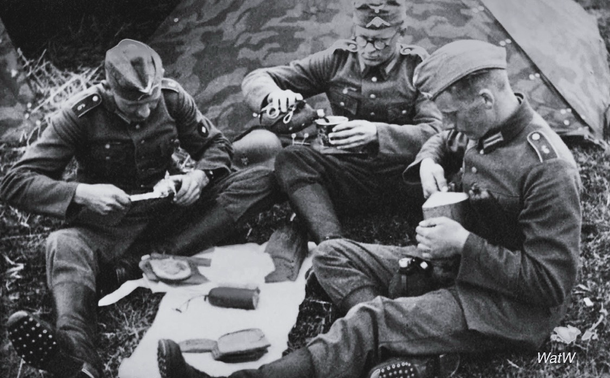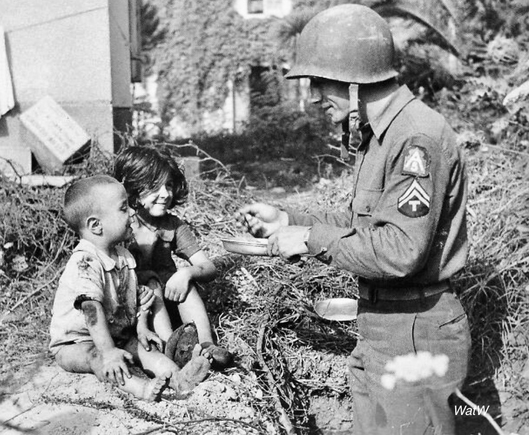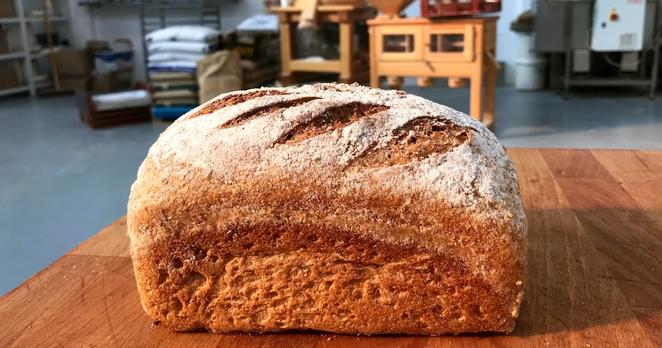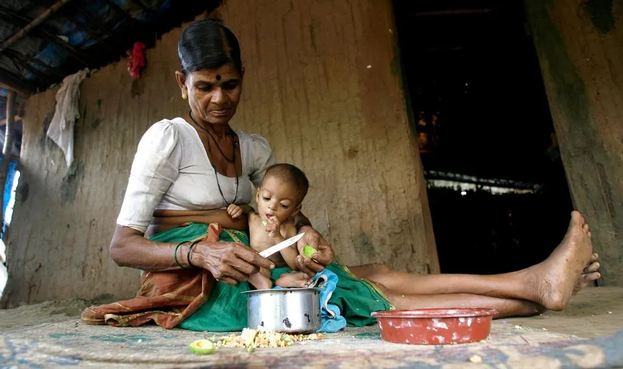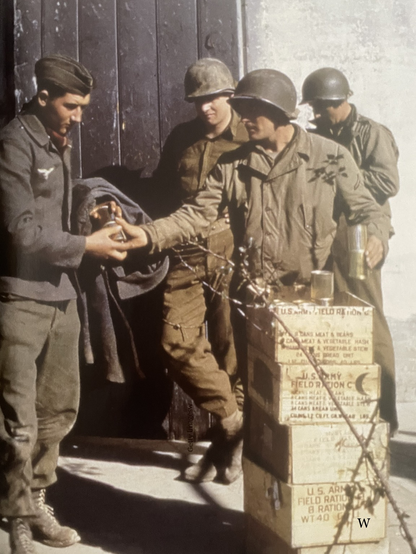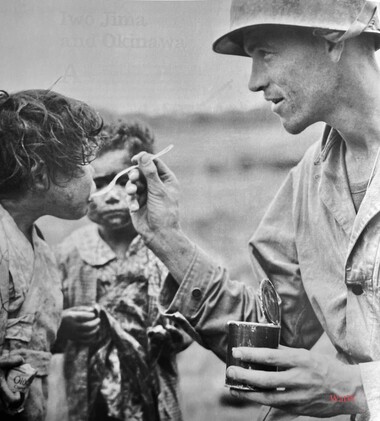OM System Outdoor Monster Curry Review: Bringing the Delicious Heat https://petapixel.com/2025/04/10/om-system-outdoor-monster-curry-review-bringing-the-delicious-heat/ #wildlifephotography #outdoorphotography #mountainclimbing #foodphotography #microfourthirds #outdoormonster #Japanesecurry #omsystemcurry #japanesefood #backpacking #micro43rds #wilderness #Products #omsystem #outdoors #Reviews #camping #cuisine #rations #curry #food
#rations
German soldiers make time to get something to eat - date and location unknown. Whilst the exact date and location is unknown, it is thought that the picture was taken during the early stages of the war #history #ww2 #worldwar2 #westernfront #fieldkitchen #rations
Badge: 🚬 🚬 🚬 Source: https://linktr.ee/Read.On
I like how it is a 🚺 socialist system in the 💣 military, as they provide everything in return for being a 🐑 slave, so it's the same as working for a 🏭 corporation pretty much but better because they manage your 🏡 rent and food 🍔 and all and don't charge for 🏥 healthcare.
#socialist #corporateslave #militaryfood #soldiers #benefits #rations #medicalinsurance #militarylife #existence #socialism #socialistrevolution
Have you ever heard of the National Loaf? No, it’s not a detective novel or a spy thriller. It’s actually a type of bread that was made in Britain during the Second World War. And it was not very tasty.
I stumbled upon this curious fact while reading some of the descriptions left by my Grandma. She often wrote about bread becoming chewy and grey, and I wondered if she was just being picky or if there was something more to it. So I did a bit of googling and discovered the National Loaf.
Apparently, the government decided to make this bread from wholemeal flour with added calcium and vitamins, to cope with the shortages of white flour and sugar. They also claimed that it was healthier and more filling than white bread. But there was a catch: the National Loaf had to be sold one day old, or so the legend goes. This might explain why my Grandma was obsessed with the idea that bread should not be eaten on the first day. I’m not sure if this rule was actually enforced, but I do know that the National Loaf was often sold one day old anyway, because of the rationing and the difficulties of getting to the shops.
Here is some more detail on the National Loaf:
The National Loaf was a bread made from wholemeal flour with added calcium and vitamins, introduced in Britain during the Second World War by the Federation of Bakers (FOB). Introduced in 1942, the loaf (similar to today’s brown bread) was made from wholemeal flour to combat wartime shortages of white flour and sugar. The loaf was abolished in October 1956.
Working with the government, the FOB published four recipes for wholemeal bread, which became the only recipes that could legally be used to make bread in the U.K. The National Loaf was grey, mushy and unappetising; only one person in seven preferred it to white bread, which became unavailable. The government insisted on it because it saved space in shipping food to Britain and allowed better utilization of existing stocks of wheat.
Eleanor Roosevelt, the American First Lady, visiting Buckingham Palace in 1942, noted that “We were served on gold and silver plates, but our bread was the same kind of war bread every other family had to eat.”
Doesn’t sound very appetising, does it? Well, if you’re feeling adventurous, you can try making your own National Loaf at home. Here is the recipe:
National Loaf Recipe
Ingredients:
- 1 ½ lb wholemeal bread flour
- 1 ½ tbsp salt
- 1 ½ tbsp dried yeast
- 1 dsp (dessert spoon) of honey or treacle (equivalent to about two teaspoons)
- 450 ml tepid water (approximately 2 cups)
Instructions:
- Mix together all the ingredients and knead for about 10 minutes until you have a soft dough.
- Place the dough in an oiled bowl, cover it with a dish towel, and let it rest until it doubles in size (around 2 hours).
- Knock back the dough, give it a short knead, and then cut it into two equal pieces.
- Place the dough in 1.5-liter loaf tins (8 x 4 x 3 inches) and allow it to rise for another 2 hours.
- Preheat the oven to 200°C (400°F) and bake the loaves for 30 minutes. To check if they’re ready, turn them out of their tins and tap the base—if it sounds hollow, they’re done.
- Allow the loaves to cool on a wire rack.
The National Loaf was a staple during wartime rationing. It had a chewy crust and was sometimes dipped in water to add moisture. Interestingly, bread was never rationed throughout the entire war, and the National Loaf became both “unpopularly popular” and a symbol of resilience.
And did you know it was the only bread available – and it kept being made for years after the war – it wasn’t until the 1950’s that White Bread made a reappearance – that surprised me, I mean I suppose I would have presumed rationing wouldn’t have ended as soon as the war ended – but 5 years later – that’s a long time
What do you think, would you have eaten the National Loaf? Or would you have preferred to go without bread altogether? Let me know in the comments below. And if you do try the recipe, please share your photos and opinions with me. I’d love to see them!
#author #blog #blogging #blogs #book #books #bread #daily #fact #facts #history #news #nonfiction #rations #reading #recipie #war #writing #ww2
An important thread on TwiX by @Peters_Glen
He analyses the allegedly accomplished disconnect of GDP vs CO2 . #IEA had published a SUCCESS story. Glen debunks it: The disconnect is NOT happening.
Look at all the charts Glen created
https://nitter.cz/Peters_Glen/status/1753333579801636953#m
The disconnect is not happening. And where it does a tiny bit, eg Denmark, it is nowhere near enough the rate it would need to be if one wants to desperately cling to the fairy tale of #GreenGrowth & #capitalism . GreenGrowth & #GDP growth – while #CO2 shrinks as fast as it has to – works only in theory. And only if it is done globally, without "exporting" CO2-intensive activities to regions with bad emission laws.
We now need to hit the breaks really hard. Controlled, managed #Degrowth = #PlannedEconomy from now for the next 20 years or so, followed by a #PostGrowth system.
It was simply left too long, too much CO2 accumulated due to decadent #economists spouting fairytales and #BigOil telling lies.
#Economics #climate #rations
New post: The #RATIONS Trial: Food Supplements Are Transforming TB Survival In India via @forbes https://www.forbes.com/sites/judystone/2023/08/09/the-rations-trial-food-supplements-are-transforming-tb-survival-in-india/ #Nutrition #TB #infection #immunity #India
During World War II, nutritionists Elsie Otterpocket and Horace Bovine “meticulously researched a protein poor diet that allowed you to eat as much potato, veg and wholemeal bread as you wanted.”
(Which was the Government’s way of saying they’d failed to issue them ration cards.)
#WorldWar2 #wwii #wartime #history #food #nutrition #diet #rationing #rations #QI #notQI
ICYMI: 'The fact that mutton ever even rose to the ranks of high culinary fashion in the U.S. is nothing short of a miracle.' https://www.npr.org/sections/thesalt/2019/11/26/781652195/after-wwii-mutton-fell-out-of-favor-in-the-u-s-can-it-make-a-comeback #foodhistory #ovine #mutton #WWII #rations #arrosticini #ItalianCuisine
Like what about emergency communication devices like the #blackbox's have on airplanes. Or maybe a #beacon? The #titanicsubmarine may just have lacked a proper #safety #DFMEA Design Failure Mode and Effect Analysis. ....hmmm what are the ways one could get stuck down there, and have we mitigated those risks with proper tactics... #flotation devices, #radio beacons, #emergency heat #blankets, oxygen replenishment devices, extra raccoons(yes! auto complete), and #rations. Exit suit/s. #rope?
Food Innovations That Came from War: Cheetos, air fryers, and other modern mainstays from the US military. #AlexisSoyer would be amazed at the innovations of the past 160+ years. https://www.atlasobscura.com/articles/military-food-inventions and https://www.atlasobscura.com/articles/natick-lab-military-food-science #foodhistory #rations #war
A German POW is given C rations by a US private after capture at Monte Cassino - 1944. C rations consisted of two cans (one a meat and veg dish the other a bread or crackers dessert) a powered beverage and condiments #worldwartwo #worldwar2 #ww2 #worldatwar #secondworldwar #conflict #history #worldwartwopictures #war #worldwar2pictures #historyofwar #historyofwarfare #montecassino #italy #usarmy #pow #rations
@Jon6705 doubtless these canny farmers will now be planting #turnips as a substitute for 🍎🍎, with the help of a generous #postBrexit #DEFRA #subsidy from #TurnipCoffey
#BrexitDividends for the true believers round every corner. Meanwhile the rest of us make do on #war #rations.
@helgztech
True. Justification is the unfounded belief that everything can and should continue as it is.
From 1939-56, all the Brits went into emergency mode. Blue-blooded and blue-collars alike received #rations and their industry got told what to produce – no manpower for unessentials.
Women's dresses were allowed 5 buttons and they invented egg powder to save import shipping space for the war effort.
Result: all warring nations increased their CO2 bigly – but UK did not!
@jknodlseder
@alpinefolk
I think, our job is to create "appetite" in citizens for controlled #degrowth.
In democracies we don't need 100% on our side, a majority is enough. So discard the trolls in politics and industry and instead focus on citizens.
If you're US American: do not spread hopelessness that arose during analysing your society. Do not discourage others in other world regions from kickstarting the global revolution-eq.
And remember what the Brits did 1939-56: #Rations in a #TriageEconomy
Sailor, Soldier, & Explorer #Rations - #Food for the Commoner - #SaltPork
https://www.youtube.com/watch?v=vg4OIFd5-aA&ab_channel=Townsends
#Cooking #Cookery #18thC #18thCentury #Recipe #Recipes #Pork #SaltedPork #PickledPork #Preserve #PreservedFood #FoodPreservation #AmericanFood #AmericanCooking #Salting #Townsends
A US serviceman shares his rations with two Japanese children - Okinawa 1945
#worldwartwo #worldwar2 #ww2 #worldatwar #secondworldwar #conflict #history #worldwartwopictures #war #worldwar2pictures #historyofwar #historyofwarfare #warinthepacific #usmc #usarmy #okinawa #rations #gi
